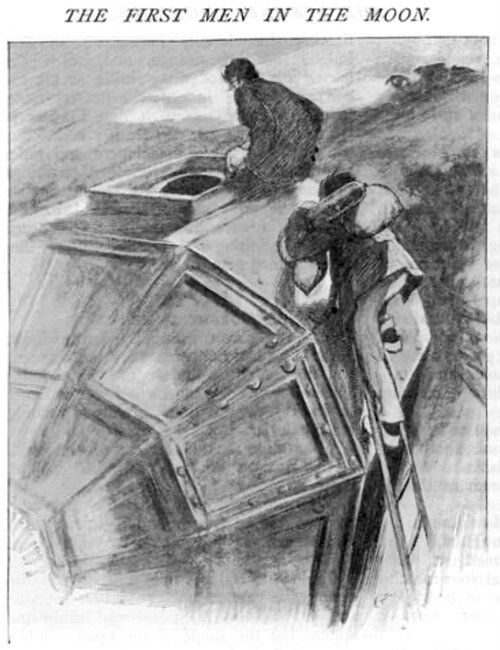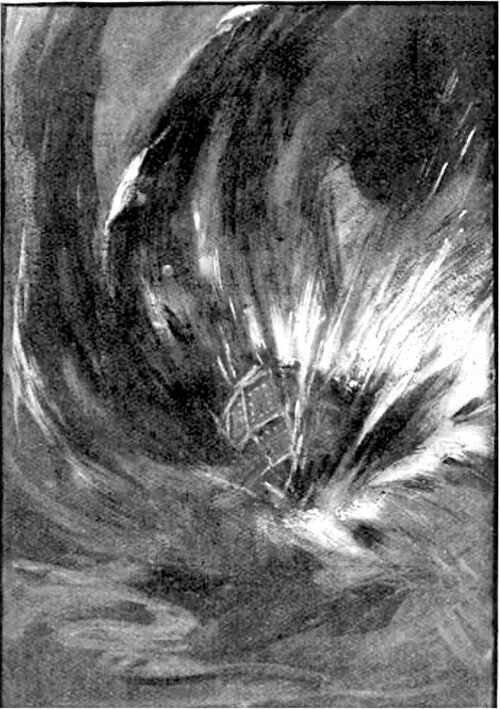Gentleman’s Astronautics
Gone fishin'
- Joined
- 15 September 2022
- Messages
- 255
- Reaction score
- 174
Any plans to consider female astronauts/cosmonauts in your alternate universe?made a rough sketch of a soviet astronaut in his overalls, what do you fellows think?View attachment 731670
given that there are female astronauts in the BIC astronaut corps (Rathbone's wife being one of them), I see no reason why there shouldn't be female cosmonauts.Any plans to consider female astronauts/cosmonauts in your alternate universe?
any further queries about the megaroc timeline?Any plans to consider female astronauts/cosmonauts in your alternate universe?
Not so farany further queries about the megaroc timeline?
true, although I do think that the BIC would probably set an arbitrary figure to go by, perhaps preceded by a series of sounding rocket flights, to see where the air is thinnest and then say "ah, yes, space starts.... hmmm... there", probably closer to the American air force boundary of space at about 80km, if I recall.I'm aware that the Megaroc maximum terminal altitude was estimated at over 1,000,000 ft, but you could quibble whether only that would really constitute the (first suborbital) formal human entry into space, or whether that threshold might actually already have been crossed on one of the preceding test flights during gradual envelope expansion
okay, we got the TRL series for the BIC Winged Orbital Rocket:Not so far. The technical leap to orbital missions will be most interesting. I'm aware that the Megaroc maximum terminal altitude was estimated at over 1,000,000 ft, but you could quibble whether only that would really constitute the (first suborbital) formal human entry into space, or whether that threshold might actually already have been crossed on one of the preceding test flights during gradual envelope expansion, e.g. when reaching the Kármán Line (although it was only postulated in 1959) or another similar limit, see alternatives at
True, although I really tried to closely model it on the actual Frankenstein & sons Full pressure suit:The helmet reminds me somewhat of the 'Theron' spacesuit from the first Dan Dare story. (Not in a negative way however having read how much research Frank Hampson and his team put into the original strip)

Oh, that's an easy answer, at least when using surgically excised quotes from Carl Sagan and NASA;an alien metabolism's ability to process Earth organic material.
We’re all made of the stuff from stars!
...
Together, all of the various nucleosynthesis reactions explain how all of the matter that makes up our world and living things came to be. That’s why you’ll often hear people exclaim that we are made of star stuff.
Organic molecules are made in space:
Simple organic molecules, some of which are the building blocks in the biochemical pathways of life, can be produced in space! Astrochemists can use telescopes to observe a large variety of organic molecules within the dusty clouds in our galaxy. Researchers have discovered organic molecules on the surfaces of asteroids and comets. Even some meteorites have a large number of organic molecules within them, showing us that they formed in space. Also, some astrobiologists working in laboratories can emulate the energetically dynamic conditions in interstellar space. For instance, they can take icy mixtures of water, methanol, carbon dioxide, ammonia, and other simple compounds and expose them to UV radiation (as they would be exposed to from stars in space). What such scientists observe is the production of simple amino acids, which are the basic unit of proteins. Proteins are large biological molecules which serve as structural components in all life forms, as well as perform the majority of life’s functions including DNA replication and repair, metabolism (how a life form makes energy from food), and responding to stimuli: all of which are fundamental to an organism’s daily life. This work shows that chemistry that naturally occurs in space can lead to the production of biologically-relevant molecules. Since these reactions are thought to be occurring wherever new stars and planets are formed, this implies amino acids could be introduced to the surfaces of all newly formed planets, and this process could have played a key role in the origin of life on Earth.
Carl SaganOur Sun is a second- or third-generation star. All of the rocky and metallic material we stand on, the iron in our blood, the calcium in our teeth, the carbon in our genes were produced billions of years ago in the interior of a red giant star. We are made of star-stuff.
 quoteinvestigator.com
quoteinvestigator.com
well, going by what wells wrote, he implemented that the martians have a bipedal species that must have be analogous to mankind, as I believe they were implemented as a manner of explaining as to why the martians can feed upon us.I don't doubt Earth organic matter can be processed - if you try hard enough - into something suited to an alien's metabolism. Short of simply burning Earth organic matter and capturing the released energy, I doubt even carbon-based alien lifeforms will profit from ingesting Earth organic matter. Then consider non-carbon-based lifeforms.
Keeping any Earth carnivore on a cow's diet will kill it. Keeping a cow on a carnivore's diet will kill it.
Moskito are perfect blood sucker...They jab the bon into the victim's neck and drain the blood directly into the heart. Any ideas chaps?









What exactly is the level of credible realism you are striving for in this game (?), i.e. in terms of the NASA TRL scale, see https://www.nasa.gov/directorates/s...vigation-program/technology-readiness-levels/ (although I personally think there should be a TRL 0 added for basic principles postulated)? Because otherwise you're just blowing smoke...I made a rough sketch of the "Bone Syringe" method, what do you fellows think?
I think I might go with it, not gonna lie
View attachment 734888
probably somewhere from 4-6, by my reckoning?What exactly is the level of credible realism you are striving for in this game (?), i.e. in terms of the NASA TRL scale, see https://www.nasa.gov/directorates/s...vigation-program/technology-readiness-levels/ (although I personally think there should be a TRL 0 added for basic principles postulated)? Because otherwise you're just blowing smoke...
At what point in time -the real UK 1950's or some alternate timeline?probably somewhere from 4-6, by my reckoning?
You measure a Video game realism with NASA Technology Readiness Levels ?What exactly is the level of credible realism you are striving for in this game (?), i.e. in terms of the NASA TRL scale,
What a predator species feeds on has more to do with a prey's biochemistry than the prey's stance. I have little regard for Wells' grasp of biology, but if you want to produce a sequel to War Of The Worlds, using his world-building as a starting point - go for it, just make sure the story's internal logic is not breached. And concentrate on story-telling. I would like to learn what happens when fifties' Earth clashes with WOTW Martians. Plausible technology would be nice.well, going by what wells wrote, he implemented that the martians have a bipedal species that must have be analogous to mankind, as I believe they were implemented as a manner of explaining as to why the martians can feed upon us.
1950s technology, within reason, such as more analogue equivalents to apollo instruments. For example, a manual star finder that uses binocular vision, with a star globe in one eye, and a periscope in the other, allowing for star tracking manually. Essentially the spacecraft would be about as advanced in comparison to other machines as a B-29 to a B-17 wasAt what point in time -the real UK 1950's or some alternate timeline?
true, I would like to apply a fair amount of scientific reasoning to most of wells' ideas, but if the science must be bent in some places then so be it. But, I only want to bend it if I must, so, in order to retain the Martian's blood sucking habits, what would you suggest?What a predator species feeds on has more to do with a prey's biochemistry than the prey's stance. I have little regard for Wells' grasp of biology, but if you want to produce a sequel to War Of The Worlds, using his world-building as a starting point - go for it, just make sure the story's internal logic is not breached. And concentrate on story-telling. I would like to learn what happens when fifties' Earth clashes with WOTW Martians. Plausible technology would be nice.
I don't mind fiction sinning against science, if the story is good. Frank Herbert's original Dune is fantasy masquerading as science fiction, but, after suspension of disbelief, I like the story.
As an aerospace engineer, of course I do.You measure a Video game realism with NASA Technology Readiness Levels ?
fair enough, technical accuracy is some of the most important accuracyAs an aerospace engineer, of course I do.
I mostly concur, except I would strike "some of" from your statement abovefair enough, technical accuracy is some of the most important accuracy
trueI mostly concur, except I would strike "some of" from your statement above.
Your drawing looks like a mosquito's sting scaled up. It should work. Some of the details provided by @Michel Van could be added, it depends on how much into the gruesome you'd want to go.in order to retain the Martian's blood sucking habits, what would you suggest?
I want to go pretty gruesome, like I have thought of a scene where the player can actually see it happen rather than just listen to it in the curate scene.Your drawing looks like a mosquito's sting scaled up. It should work. Some of the details provided by @Michel Van could be added, it depends on how much into the gruesome you'd want to go.
Ok match my work the NASA Technology Readiness Levels ?As an aerospace engineer, of course I do.
Since the only specific technology element explicitly identified in the lander (let alone for the launch vehicle concepts) are the RL-10 rocket engines, and there are claims that the RL-10 was experimentally used with Methane, most likely in a ground test, the TRL would be 6.Ok match my work the NASA Technology Readiness Levels ?


Pratt & Whitney tested modified RL-1A-1 with Methane/Flox (Fluorine 82,6% rest Lox) in 1969 under NASA Contract NAS3-7950Since the only specific technology element explicitly identified in the lander (let alone for the launch vehicle concepts) are the RL-10 rocket engines, and there are claims that the RL-10 was experimentally used with Methane, most likely in a ground test, the TRL would be 6.
The same process would apply in analogous fashion to all other system technologies and elements, such as structures, subsystems, etc..Since the only specific technology element explicitly identified in the lander (let alone for the launch vehicle concepts) are the RL-10 rocket engines, and there are claims that the RL-10 was experimentally used with Methane, most likely in a ground test, the TRL would be 6.
